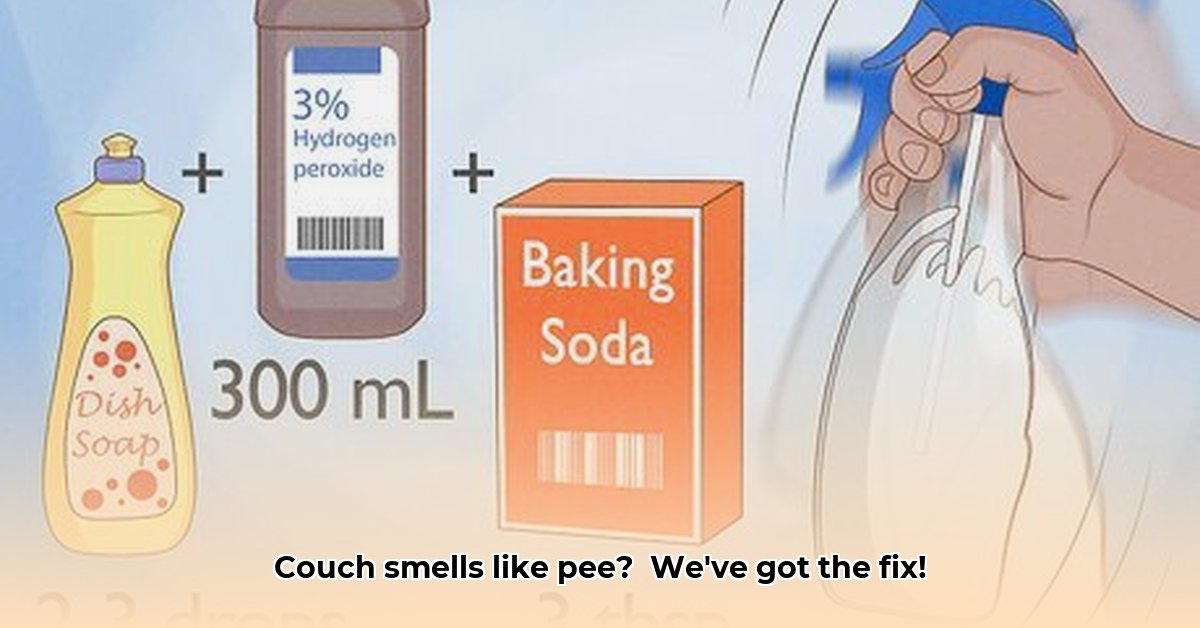Accidents happen. Whether a furry friend’s mishap or a little one’s “oops,” urine on the couch is a common homeowner woe. Don’t despair! This guide provides practical, DIY solutions to eliminate the smell and reclaim your couch’s freshness. For more in-depth advice, check out this helpful guide: Couch Urine Removal Guide.
Swift Action: The Golden Hour
The first few minutes after a urine accident are critical. Acting quickly prevents the urine from deeply penetrating the fabric and minimizes lingering odors.
- Immediate blotting: Gently soak up as much urine as possible using clean, white cloths or paper towels. Avoid rubbing, which can spread the stain and push the urine deeper into the fibers.
- Fabric identification: Check your couch’s care tag for cleaning instructions and fabric composition. This information will guide your cleaning approach. Different materials require specific treatments, and some delicate fabrics may necessitate professional cleaning.
Effective Cleaning Solutions: From Your Pantry to the Store
Several effective cleaning solutions can tackle urine odors, ranging from readily available household items to specialized cleaners:
- Enzyme cleaners: These powerful cleaners are specifically formulated to break down the uric acid crystals in urine, the primary source of the persistent odor. Always follow the product instructions carefully, as dwell times and application methods may vary.
- Baking soda: This natural odor absorber is a valuable ally in neutralizing lingering smells. Sprinkle generously over the affected area after cleaning with an enzyme cleaner or vinegar solution. Allow it to sit for at least an hour, or overnight for stubborn odors, before vacuuming thoroughly.
- White vinegar solution: A diluted vinegar solution (one part white vinegar to four parts water) can be effective for many upholstery types. Always test the solution on an inconspicuous area first to ensure colorfastness.
- Hydrogen peroxide solution (for light-colored fabrics): A mixture of hydrogen peroxide, baking soda, and a drop of dish soap can be effective on light-colored, washable fabrics. Test on a hidden area first, as hydrogen peroxide can bleach some materials.
Step-by-Step Cleaning Protocol
- Blot, don’t rub: Immediately absorb excess urine with clean, white cloths or paper towels.
- Enzyme cleaner application: If using an enzyme cleaner, follow the product instructions precisely. Saturate the affected area and allow the cleaner to dwell for the recommended time.
- Blot and rinse (if applicable): Blot the area again to remove excess cleaner. If the fabric is washable and the care tag permits, rinse the area with clean water.
- Baking soda treatment: Sprinkle baking soda liberally over the area and let it sit for at least an hour, or overnight for stubborn odors.
- Thorough vacuuming: Remove all baking soda residue using a vacuum cleaner with an upholstery attachment.
Tackling Stubborn Stains and Odors
For persistent stains or deep-set odors, consider these advanced strategies:
- Repeat cleaning steps: Repeat the enzyme cleaner and baking soda steps as needed. Multiple treatments may be required for complete odor elimination.
- Professional upholstery cleaning: For delicate fabrics, valuable furniture, or extremely stubborn stains, consider consulting a professional upholstery cleaning service. Their expertise and specialized equipment can often achieve the best results.
- Ozone generators: Ozone generators can effectively neutralize stubborn odors, but use with caution. Follow manufacturer instructions carefully and ensure proper ventilation.
Preventing Future Accidents
Prevention is the best defense against couch urine stains and odors. Implement these strategies to minimize the risk:
- Pet management: Consistent training and supervision are crucial for pet owners. Consider using pet-friendly deterrent sprays, protective couch covers, or designating pet-free zones.
- Childcare strategies: Reinforce potty training and address accidents promptly. Waterproof mattress pads or covers can also protect your couch from accidents.
- Protective barriers: Utilize waterproof couch covers or furniture throws to create a protective layer against spills and accidents.
Fabric-Specific Cleaning Guide
| Upholstery Type | Recommended Cleaning Solution | Important Considerations |
|---|---|---|
| Microfiber | Enzyme cleaner, baking soda | Microfiber is highly absorbent; avoid oversaturation and ensure thorough drying. |
| Cotton | Vinegar solution, enzyme cleaner | Cotton is durable; repeated cleaning may be necessary. Test cleaning solutions in an inconspicuous area first. |
| Leather | Mild soap and water, followed by a | Always test in an inconspicuous area. Condition leather after conditioning treatment. |
| 1:1 vinegar and water solution with | cleaning to maintain its suppleness. Coffee grounds in a breathable bag can absorb lingering odors. | |
| Silk/Velvet | Professional cleaning recommended | Delicate fabrics require expert care to prevent damage. |
By following these guidelines and choosing the appropriate cleaning methods for your couch’s fabric, you can effectively banish urine odors and restore your couch to its former freshness. Remember, prompt action and the right cleaning solution are key to success.
- Call of Duty Not Launching Steam? Get Your Game Running Again - December 23, 2025
- Cod Not Launching On Steam? Troubleshoot Common Game Start Issues - December 22, 2025
- Game Installation Problems Often Require Smart Troubleshooting For Smooth Gaming - December 21, 2025







